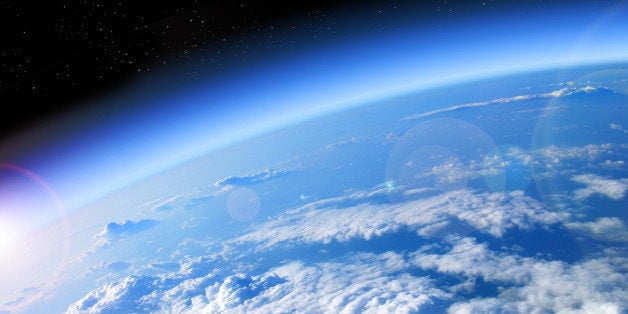
There's a chance to score a climate victory next week on the super-pollutants called hydrofluorocarbons or HFCs - one that would give a boost to the Paris climate summit next month.
I am in Dubai for the annual meeting of the Montreal Protocol, the treaty that saved the ozone layer. This is the last important international meeting before world leaders gather at the Paris climate summit. An agreement to stop the rapid growth of HFCs and pave the way for safer alternatives is within countries' grasp. This would be a great signal for Paris.
On the upside, nearly all countries now embrace the idea of curbing HFCs under the Montreal Protocol. And the endorsement comes not just from mid-level officials, but from presidents and prime ministers. Four HFC phase-down amendment proposals are on the table, from North America, Micronesia, the European Union, and India. Although they differ, each proposal follows the proven formula of the Montreal Protocol: both developed and developing countries agree to controls on covered chemicals, with developing countries given more time and funding to cover transition costs. We've come a long way toward agreement.
Yet even as the consensus for action has strengthened, some countries are keeping the brakes on. For most of the last year, Saudi Arabia led a small group obstructing HFC negotiations, ostensibly concerned about air conditioning in extreme temperatures, but plainly also pursuing an overall go-slow strategy in climate talks. Argentina has also held back, believing it was ill-treated in negotiations to fund transition costs for phasing out other chemicals, called HCFCs. India put an HFC proposal on the table, but seems reluctant to move forward.
In short, everyone in Dubai has eyes on Paris. Some countries - both developed and developing - think striking a fair and effective HFC deal will advance the Paris climate talks. Others see an HFC deal as a bargaining chip to be held back until after Paris.
In hopes of bridging the divide, the U.S., Canada, and Mexico are pitching a two-step proposal. The Parties could get started this year with initial HFC limits, while deferring negotiations over the longer phase-down schedule until next year. Specifically, they propose that developed countries cut HFCs by 10 percent in 2019 and 35 percent in 2024. Developing countries would freeze HFC levels in 2021, and would receive additional MLF funding. Countries would commit to settle the remaining phase-down steps and financial assistance in 2016.
After two days of preliminary talks here in Dubai, delegates have finally set up a "contact group" to negotiate over HFC curbs. That's welcome progress, but we will have to see if talks next week pick up from their snail's pace over the last year. Higher level officials (including the U.S. EPA Administrator) are arriving next week, and that's when real progress often happens.
Countries have five days more to get something done. Will we see a breakthrough?